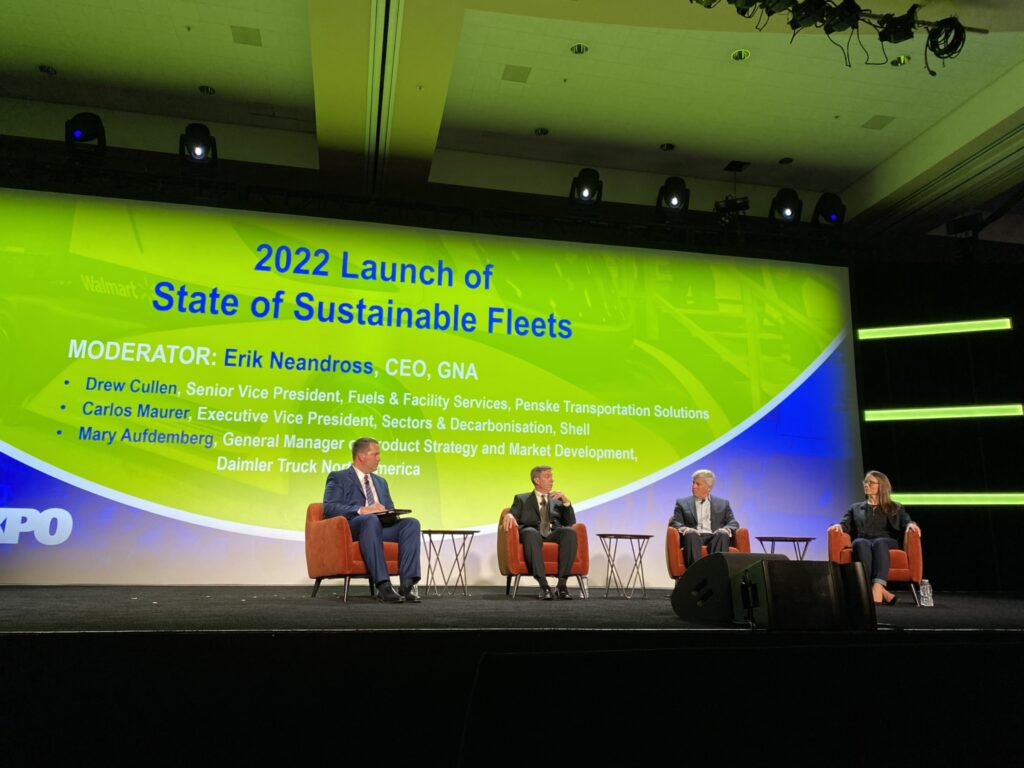Sustainable trucking will require multiple solutions: ACT Expo panel
Truck manufacturers, energy providers, and fleets alike are sharing a common journey toward sustainable transportation. Just don’t expect any single energy source to answer every need.
“There isn’t really one solution,” said Daimler Trucks North America general manager of product strategy and market development Mary Aufdemberg, during a panel discussion on the opening day of Advanced Clean Transportation (ACT) Expo. “It’s also going to be different for every segment.”

For regional hauls, the preferred option might be battery-electric trucks, while longer trips could require hydrogen fuel cells. “Hydrogen will need to be part of the mix if the world wants to meet the Paris Agreement,” said Carlos Maurer, Shell’s executive vice-president – sectors and decarbonization.
“This will be a poly-fuel world.”
To compound the challenges, each energy option will be governed by a different regulatory framework, he said. That will be true whether the energy is produced from cow manure, wind turbines, or solar arrays. “It’s not only going to take different timelines across different platforms. It’s going to take different timelines in different regions, in different countries.”
“We’re definitely not at a point where you’ve got one clear winner. I don’t know if you’ll ever really get there,” said Drew Cullen, Penske Truck Leasing’s senior vice-president – fuels and facility services. But whatever vehicle and energy source is combined, it will need to be economical and viable.
“Things don’t always go as planned,” he added of the evolving options. “Stuff happens and things go wrong.”
Maurer described it a different way: “What you see will probably be thousands of little pivots that will drive us through that energy transition.”
But much of that transition is also being driven by regulatory demands.
“The easy route would be [to] continue to do everything we’ve always done,” Aufdemberg said, acknowledging the role of regulatory changes such as California’s Clean Air Act.
But so, too, will there be a role for financial incentives to help fleets realize a favorable total cost of ownership, she said. “Just requiring me to sell my unit is not going to be enough to get us across the finish line to zero [emissions].”
As important as the trucks will be, the panelists also stressed the importance of the underlying infrastructure to deliver alternative fuel and electric power alike. And Maurer noted that the returns on such investments are measured in decades rather than years.
It isn’t the only way that time will play a role in related decisions.
“It’s not just the fuel. It’s the dispensing of the fuel. It’s the [refueling] rate,” Maurer explained. It won’t make sense to ask a truck driver to plug in a truck for two hours between deliveries, after all. “That’s a long coffee break.”
“We need the confidence that we can get the trucks from A to B to C,” Aufdemberg added. For fuel cells serving longhaul trucks, that will mean something like a cross-country network of fueling stations.
But while there is plenty of work to do, the demand for zero-emission vehicles has already arrived. Customers want such vehicles now, Cullen said.
“They’ve got shareholders. They’ve got associates. They’ve got customers,” he said.
Suppliers such as Penske simply need to encourage them to be patient. Because change is coming.
Have your say
This is a moderated forum. Comments will no longer be published unless they are accompanied by a first and last name and a verifiable email address. (Today's Trucking will not publish or share the email address.) Profane language and content deemed to be libelous, racist, or threatening in nature will not be published under any circumstances.
I believe the first challenge is eliminating non-productive time on the truck. For far too long drivers have had to wait for Shippers and Receivers to take them in and out. They wait too long between dispatches as well. Once these productivity issues are resolved then the charging facilities can be added at designated parking (rest areas) and truck stops. Electric vehicles will go far in helping improve driver productivity.